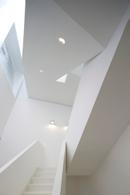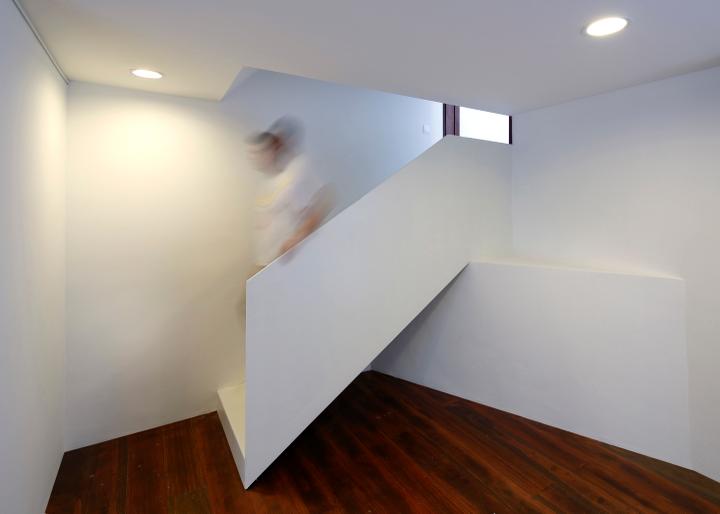1 / 6






Project Details
This is a small building, with two programs—a house and an art gallery—squeezed into a very dense conservation building in the heart of Singapore's red light district.
The design attempted to balance this programmatic double-life through a play of two volumes. The lower volume contains a triple-height gallery and kitchen. Above is a rotated tower, which appears to hover in the air above the main floor; this holds bedrooms and private spaces. The building has been designed such that the client may open the gallery to the public, via a separate access at the rear lane.
The Gallery House is sited in a typical Singaporean lot, between two very long party walls. In order to bring natural light deep into the interior, a series of small gardens have been extracted from the facade and roofline. This creates a complex series of nested spaces, merging the interior with tropical landscape. Rooms are unexpectedly located and strangely formed, partially overlapping with others or sharing views of interior canyon spaces.
The largest of these contains the main stair, which winds informally between rooms at front and back as in the "airwells" common to this regional typology.
To manage the interesting challenge of internal privacy, a series of decorative metal screens were developed to maximize light and oblique view, while preventing direct visual access into bathrooms and bedrooms. These screens were developed using a set of programming code to account for sight lines and circulation paths. In these, a series of small rectangular openings appear to grow and shrink, dilating where sensitive views do not create problems.This is a small building, with two programs—a house and an art gallery—squeezed into a very dense conservation building in the heart of Singapore's red light district.
The design attempted to balance this programmatic double-life through a play of two volumes. The lower volume contains a triple-height gallery and kitchen. Above is a rotated tower, which appears to hover in the air above the main floor; this holds bedrooms and private spaces. The building has been designed such that the client may open the gallery to the public, via a separate access at the rear lane.
The Gallery House is sited in a typical Singaporean lot, between two very long party walls. In order to bring natural light deep into the interior, a series of small gardens have been extracted from the facade and roofline. This creates a complex series of nested spaces, merging the interior with tropical landscape. Rooms are unexpectedly located and strangely formed, partially overlapping with others or sharing views of interior canyon spaces.
The largest of these contains the main stair, which winds informally between rooms at front and back as in the "airwells" common to this regional typology.
To manage the interesting challenge of internal privacy, a series of decorative metal screens were developed to maximize light and oblique view, while preventing direct visual access into bathrooms and bedrooms. These screens were developed using a set of programming code to account for sight lines and circulation paths. In these, a series of small rectangular openings appear to grow and shrink, dilating where sensitive views do not create problems.Read MoreHide
Interior Style
Modern







